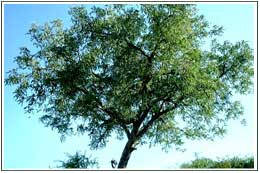|
|
 |
|
|
|

A beautiful, leafy tree that is both drought resistant and yields exceptional fruit per tree, S. birrea is highly prized in Africa. It is widely distributed from 20ºN to 30ºS, and is found in 29 countries, but few have succeeded in commercially harvesting the fruit and/or nuts. A prolific fruit bearer, one single tree can bear up to 500 kg of fruit per year; in fact an exceptional tree in Pretoria is known regularly to produce a tonne of fruit!
Marula is a medium to large tree, usually 9 metres tall, but can grow up to 18 metres. It is single-stemmed with a dense, spreading crown and deciduous foliage. Fascinatingly enough, only the female trees bears fruits, while the male tree displays flower. The tree grows well between 769 to 921m in elevation, and occurs in semi-arid to sub humid portions of Africa.
Marula wood has been traditionally used for carving pestles and mortars, bowls, drums, beehives and stools and even canoes in some areas. During colonial times it was even used for tomato boxes and toilet seats.
Regarded as a sacred tree in Africa, the marula is protected in communal lands under the local chief. Because of its leafy foliage and shade-bearing size, it is popular with villages for local meetings, and often in a ploughed field will be the only tree left standing. The marula tree is often the spiritual centre for ritual activity in kraals and villages.
The bark of the tree has medicinal properties and is used widely in treating dysentery and diarrhoea, rheumatism, insect bites and a variety of other ailments. Essence from the leaves is said to provide a remedy for abscesses, spider bites and burns. Preliminary tests show weak pharmalogical activity relative to hypertension, anti-inflammation and painkilling.
There is even legend that a woman can take bark from the male or female tree to determine the sex of her next baby.
The tree is protected in South Africa. In 1951, the Controller of Timber in South Africa passed Proclamation 257 declaring S. caffra a protected tree in Transvaal. Through Marula Pty Ltd's association with MDA at the Mhala Branch in Limpopo Province of South Africa, a strict policy on the treatment and harvesting of marula trees and fruit is in place. A partnership with a Community Forestry in Department of Water and Forestry of South Africa provides a vehicle to ensure sustainable harvesting and resource management.
While the fruit is prolific and the tree widely available, all efforts are made to ensure that the product we bring to you is environmentally friendly and Fairly Traded.
|
|
|